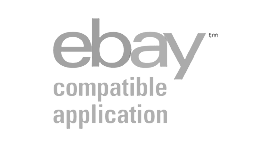(This post was originally published on December 7, 2012. We’ve updated it for accuracy and completeness.)
ERP implementations have a nasty reputation for being challenging.
These challenges can lead to your ERP implementation project taking too much time and being over budget.
The result can be you being left with an underperforming solution. Or, you avoiding implementation of an ERP at all costs.
While the challenges are real, they shouldn’t stop you from implementing one.
In this post, we’ll cover some of the challenges of ERP implementations. Knowing these ERP challenges upfront could mean the difference between a successful and a nightmare of an implementation experience.
How ERP Software Works
First, how does ERP software work? Understanding this complexity, we’ll set the stage for why implementation can be challenging.
Enterprise Resource Planning (ERP) software has been around since the 1990s. It has evolved from material requirements planning to automating all back office functions.
ERP software works by integrating separate systems together into a holistic source of information and resources.
This allows managers to identify trends, optimize systems, streamline decision making based on measurable metrics. This can improve the bottom line of any organization that decides to take the plunge.
Common ERPs you might be familiar with are SAP, Oracle, Microsoft GP, and NetSuite.
An ERP system takes your separate, complex business process and streamlines them. This is no easy task.
An ERP software implementation involves many resources in terms of your data, employees’ time, and money. With so many moving parts, you can see how an ERP implementation can quickly go wrong.
But, being aware of these ERP challenges below can help you prepare for (and avoid) them during implementation.
Challenges of ERP Implementation
ERP Integrations
The first challenge with implementing ERP software is knowing what processes or systems should be integrated, and which ones shouldn’t.
It is difficult to know where integrating systems in an organization can gain a competitive advantage and where it will hinder the organization’s workflow.
Do you need to integrate your ERP with your eCommerce and your POS software? Or, what about your accounting and CRM?
This becomes even more complicated in a large organization where different business divisions view each other as competition, or good old fashioned office politics gets in the way.
Decision makers often don’t know fully what the ERP system is capable of when they’re planning the system.
Do your homework on all your ERP’s software capabilities upfront. Make sure you understand the value of each integration (and the cost).
You be asking yourself questions like this: is integrating your CRM essential to running your business, or would it just be nice to have?
Setting ERP Software Implementation Goals
Another challenge is setting well-designed measurable goals and objections for your ERP implementation.
Without goals, your implementation is sure to be directionless. This can lead to even more challenges and frustration.
These goals need to be defined at the outset of the project. You also to need to put a process in place for adding to or changing these goals.
Designate who your implementation team is at the beginning. Understand each team member’s goals and departmental needs by the end of the ERP implementation.
Always work with your goals in sight, but understand that needs could change throughout the implementation process.
Many projects, not just an ERP implementation, have failed because goals were not established.
Customization
One of the most often misunderstood issues with most ERP systems is the belief that they typically require extensive customization.
Often what a company is buying is not a packaged solution, but a framework with which to build a solution.
When you don’t consider these two factors, decision makers are not equipped to ask the right questions. Like, what will your order workflows specifically look like?
This ERP challenge can lead to projects being delayed and cost overruns.
Understanding your ERP’s framework, and how it applies to your business will help you uncover the best way to build your ERP solution. Avoid delays because of capability confusion and going over budget.
Flexibility Challenges of ERP Software
Another challenge of an ERP implementation is dealing with the flexibility of your chosen ERP software.
An ERP system that is not flexible may force an adopter to change their business processes to fit the ERP system model.
This requires a re-engineering of steps needed to complete business tasks and retraining of employees and business partners, sometimes even customers. As we all know, people inherently do not like change, and this will create resistance and delays for any organization (at least in the short term).
Be aware of how exactly your ERP will affect your business processes. Know what types of changes you’re going to have to make, and prepare for them.
What to Do Next
Despite these challenges, an ERP is a resource that is here to stay. It can significantly improve an organization’s workflows, business, and decision making.
Doing it right is definitely worth the extra effort (and will most likely save you resources).
Not sure how to pick the right ERP for your business? Check out our free Multichannel Implementer’s Guide. Just click the image below to download.







I agree that implementation of the advertising agency management software taking too much time and being over budget but in the long term it pays off:)
[…] https://www.nchannel.com/blog/common-challenges-with-erp-software-implementation/ […]
ERP software have become widely used in businesses of all sizes and types for a number of years now. Even small businesses and family-owned companies have joined the mainstream trend of implementing ERP software, with many ERP software providers offering solutions just for smaller-sized organizations. Here you can check many ERP software with comparison, pricing and much more at SoftwareSuggest.